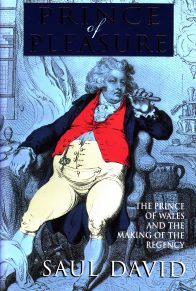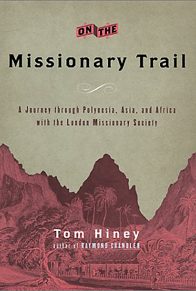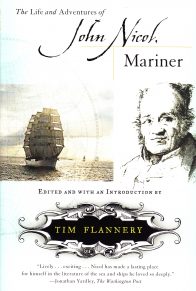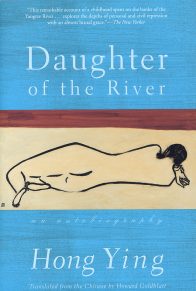“An absolutely brilliant and entertaining book—a delightful romp through a seemingly impossible history. It’s a bit amazing how much I didn’t know about the best-known statue in America, or its maker, Frédéric Bartholdi—a character so brazen and outrageous and charming that his life reads like a picaresque nineteenth-century novel. I delighted in every page.” —Elizabeth Gilbert, author of The Signature of All Things and Eat, Pray, Love
“A myth-busting story starring the French sculptor Frédéric Auguste Bartholdi. Mitchell’s adjectives for him include crazy, driven, peevish and obnoxious. He rarely missed an opportunity to advance his own career, but Mitchell says he had ‘an incredible ability to soldier on’ through a 15-year struggle. . . . Were it for not for Bartholdi, the statue probably would not have been built. In today’s world, Mitchell can’t imagine any single person driving such a massive undertaking.” —Bob Minzesheimer, USA Today
“Journalist Elizabeth Mitchell recounts the captivating story behind the familiar monument that readers may have assumed they knew everything about.” —Sam Roberts, New York Times
“Turns out that what you thought you knew about Lady Liberty is dead wrong. Learn the truth in this fascinating account of how a French sculptor armed with only an idea and a serious inability to take no for an answer built one of the most iconic monuments in history.” —O, the Oprah Magazine
“Streamlined and well constructed. . . . Proceeding chronologically, the author divides her story into three parts (‘The Idea,’ ‘The Gamble,’ ‘The Triumph’) and opens with just the right amount of initial biographical detail on the designer, bolstering her portrait with further historical background as the narrative warrants. . . . deft strokes and always apt, telling details. . . . Mitchell successfully conveys the enormity of the undertaking and the infuriating amount of bureaucracy and old-fashioned glad-handing required to finish the job. . . . In Bartholdi, Mitchell has found a fascinating character through which to view late-19th-century America, and she does readers a service by sifting fact from fiction in the creation of one our most beloved monuments.” —Eric Liebetrau, Boston Globe
“The Statue of Liberty, which has stood at the entrance to New York’s harbor for more than a century and a quarter, is chiefly the work of a French sculptor named Frédéric Auguste Bartholdi . . . Mitchell tells the story of its construction . . . a good story.” —Jonathan Yardley, Washington Post
“Mitchell casts doubt on several myths about the genesis of and inspiration for Lady Liberty . . . Quite certain that the sculptor did not use his mother as the model for the statue’s face, Mitchell speculates that he may have had his deceased brother Charles in mind. And she suggests that there may be something to rumors, circulated at the time, that the body of Lady Liberty resembled Bartholdi’s paramour, later his wife.” —Glenn C. Altschuler, San Francisco Chronicle
“Lady Liberty has her secrets . . . In Liberty’s Torch, Elizabeth Mitchell chronicles the efforts of French artist Frédéric Auguste Bartholdi to erect his colossal statue, from a failed concept on the Suez Canal to the icon’s dedication in New York harbor.” —Metro
“Filled with outlandish characters, fascinating tidbits and old world adventure, Liberty’s Torch is a rollicking read about one of America’s most beloved and, until now, misunderstood, icons.” —Maria Semple, author of Where’d You Go, Bernadette
“Is there any more globally recognizable American icon than the Statue of Liberty? Or any about which Americans know less? In Elizabeth Mitchell’s capable hands, the fascinating story of its quixotic creation—the mix of idealism and hustle, selflessness and selfishness, a crazy dream realized with breathtaking ingenuity—is a perfect parable for the moment mongrel America arose to become the world’s spectacular, improbable colossus.” —Kurt Andersen, author of True Believers
“Every American schoolchild learns the story: In a grand gesture representing their shared reverence for freedom, France presented to a grateful United States the imposing 305-foot Statue of Liberty. . . . Except, like all history, the story is a little more complicated than that. Elizabeth Mitchell takes us inside the statue’s history . . . Despite the statue’s iconic status in American culture, Bartholdi’s name probably does not spring into your mind as soon as you see its image. But Mitchell’s book does a fine job of retrieving him from the mists of history—and of recounting how long and hard he labored, not just artistically but financially and politically, to make the statue a reality. . . . Fascinating.” —Colette Bancroft, Tampa Bay Times
“What we take for granted as a fait accompli was anything but, as we learn in this engrossing, witty, well-researched and surprising account of the Statue of Liberty’s bumpy path to glory. Mitchell does a beautiful job of breathing new life into a too-mythic tale, taking us behind the scenes to witness the hustling, chicanery, rivalries, back-stabbings, lies and disappointments that foreshadowed this eventually triumphant merger of patriotism, opportunism and the art world.” —Phillip Lopate
“Mitchell maintains a light touch in this examination of the life of Frédéric Auguste Bartholdi.” —Kirkus Reviews
“Elizabeth Mitchell is an inspired writer and Liberty’s Torch is a great book. While the French sculptor Frédéric Auguste Bartholdi is Mitchell’s colorful hero, a gallery of historical figures like Victor Hugo and Joseph Pulitzer make grand appearances. My takeaway from Liberty’s Torch is to be reminded that the Statue of Liberty is the most noble monument ever erected on American soil.” —Douglas Brinkley, Professor of History at Rice University and author of The Wilderness Warrior: Theodore Roosevelt and the Crusade for America
“Through her portrait of the statue’s creator, Frédéric Auguste Bartholdi, and her careful examination of his journey to build the colossus now known as the Statue of Liberty, Mitchell brings to life a gripping adventure story . . . Mitchell feels obliged to be as accurate as possible, yet manages to give her readers access to troves of detail. Her depictions of scenes can be sensual. . . . In a story comprising tragedy and humor, Mitchell revives a slice of history. She teaches the importance of faithfulness to accuracy in reporting, and demonstrates that adherence to the facts will likely yield a story that is at once true and entertaining.” —Megan Cerullo, Brooklyn Daily Eagle













